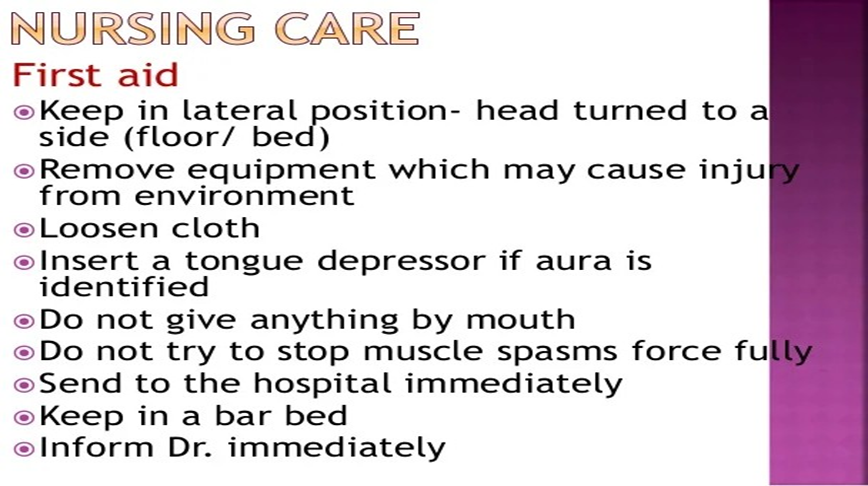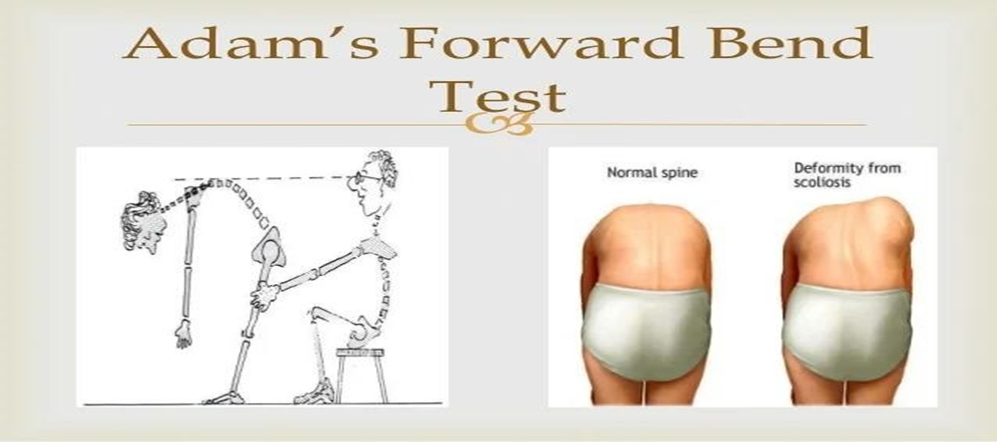A nurse enters a school age child's room to administer morning medications and finds the client sitting in a chair having a seizure. After lowering the client to the floor, which of the following actions should the nurse take first?
Apply oxygen by nasal cannula.
Administer an anticonvulsant medication.
Turn the client to a lateral position.
Check the client's oxygen saturation.
The Correct Answer is C
C. The priority during a seizure is to protect the patient from harm, particularly from aspiration if they vomit or have excessive saliva production. Turning the client to a lateral position helps maintain an open airway and prevents aspiration. This action should be taken immediately after lowering the client to the floor to ensure their safety.
A. Providing oxygen is important for a patient experiencing a seizure. However, it's not the first action to take. The priority is to ensure the patient's safety and protect them from injury during the seizure.
B. Administering anticonvulsant medication during an active seizure is not appropriate. Anticonvulsants are typically prescribed as maintenance therapy to prevent seizures or to manage seizure disorders in a controlled manner, not during an acute seizure episode.
D. Monitoring oxygen saturation is important but it's not the first action to take during an active seizure. Ensuring the patient's safety and protecting them from injury take precedence. Oxygen saturation can be assessed once the patient is in a safe position.

Nursing Test Bank
Naxlex Comprehensive Predictor Exams
Related Questions
Correct Answer is D
Explanation
D The forward bending test, also known as the Adam's forward bend test, is commonly used to screen for idiopathic scoliosis. During this test, the child is instructed to bend forward from the waist with their arms hanging downward and palms touching or overlapping. This position allows the nurse to observe the child's back for asymmetry, rib humps, or other signs of spinal curvature characteristic of scoliosis.

A This position may be used for certain examinations, such as assessing the spine's curvature but it is not typically the position used for screening for idiopathic scoliosis.
B This instruction involves cervical spine movement and is not relevant to screening for idiopathic scoliosis. It may be part of a different examination, such as assessing cervical spine range of motion or neurological function, but it does not aid in detecting scoliosis.
C Turning to the side and remaining relaxed may not provide adequate visualization of the spine's curvature, which is essential for scoliosis screening. Additionally, this position does not allow for proper assessment of the spine's alignment.
Correct Answer is C
Explanation
- This aligns with general guidelines for managing bacterial conjunctivitis, which emphasize the importance of cleanliness and avoiding the sharing of personal items to contain the infection.
A. Bacterial conjunctivitis is highly contagious, and the child should not attend school until they have been on antibiotics for at least 24 hours and their symptoms are improving. Allowing the child to attend school before this time could lead to the spread of the infection to other children.
B. Crusted material around the eye should be gently wiped away using a clean cotton ball soaked in warm water. It's important to start wiping from the inner aspect of the eye and move toward the outer aspect to prevent spreading any infectious material into the eye.
D. Eye medications, especially antibiotics prescribed for bacterial conjunctivitis, should not be saved for future use or shared with others. Each individual should have their own prescribed medication to avoid the risk of improper dosing or spread of infection.
Whether you are a student looking to ace your exams or a practicing nurse seeking to enhance your expertise , our nursing education contents will empower you with the confidence and competence to make a difference in the lives of patients and become a respected leader in the healthcare field.
Visit Naxlex, invest in your future and unlock endless possibilities with our unparalleled nursing education contents today
Report Wrong Answer on the Current Question
Do you disagree with the answer? If yes, what is your expected answer? Explain.
Kindly be descriptive with the issue you are facing.
